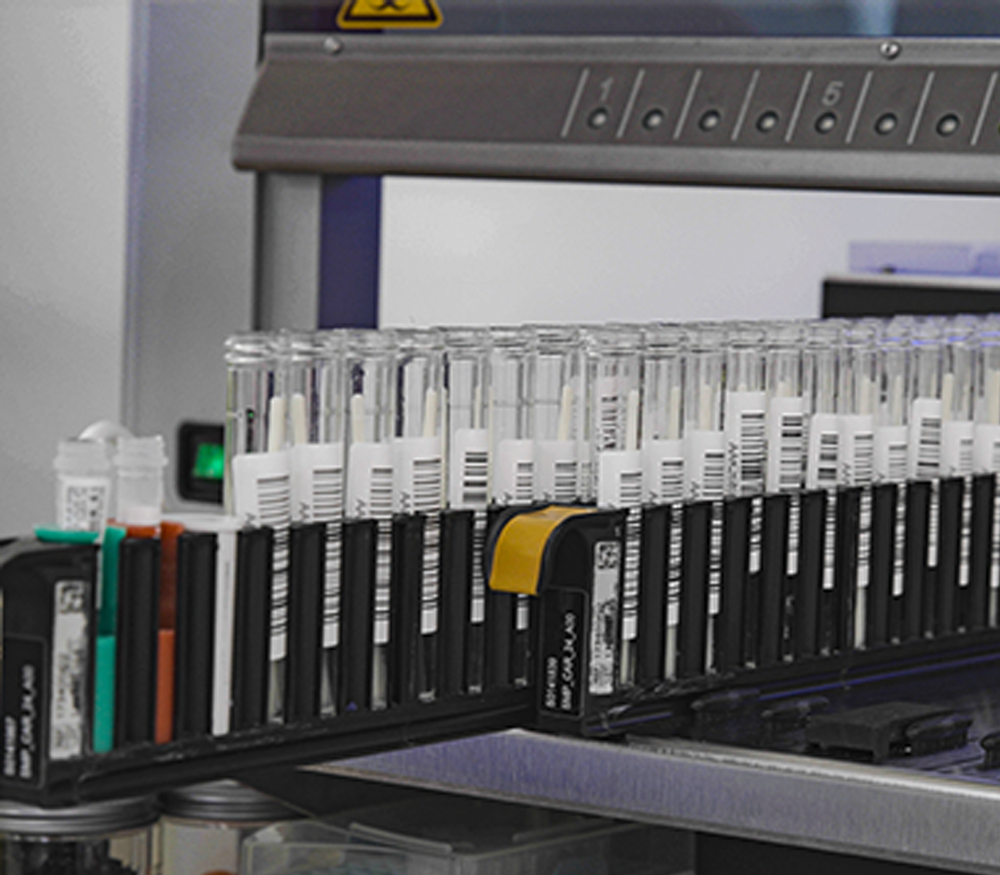
Testing plays a key role in our effort to fight and contain COVID-19; helping to mitigate the spread of the disease by identifying infected individuals and variants quickly and helping to break chains of transmission.
PCR testing for COVID-19 has become just as commonplace across the country as hand sanitiser and facemasks.
The country’s Lighthouse Lab network, which processes the swabs, is an intrinsic part of the government’s pillar 2 testing capacity and can currently process more than 620,000 tests a day.
Although part of everyday life, the journey our test swabs have been on before the results come back to us – with either a positive or negative result – is a little less well known.
For children being tested using PCR, as they head into winter after half-term, Kieran Finney – a Laboratory Operations Lead at Medicines Discovery Catapult (MDC) Lighthouse Lab in Alderley Park, Cheshire – has opened the doors to the region’s students via an informative video, to explain the science behind the process and what goes on at the lab.
The Alderley Park lab where Kieran works was launched in April 2020, a little over a month after the MDC team were tasked to establish the lab by the government.
Today, Kieran, alongside a team of 750 colleagues at the Alderley Park lab, can process up to 80,000 samples daily for the Test and Trace programme. The wider network they form part of has been instrumental in supporting the pandemic effort, and central to informing government policy by tracking the scale and spread of the COVID-19 pandemic and identifying new variants.
Kieran works to process tens of thousands of tests a day in the fight against COVID-19, which forms part of the largest network of diagnostic labs in British history. He comments:
“Most of us will either know someone who has taken a COVID-19 test, or had one ourselves. Although the concept of testing isn’t a new one, it is interesting to know what happens to your swab once it has been packed up and sent to us.”
The Lab uses real-time polymerase chain reaction (RT-PCR), which is a highly sensitive test able to detect tiny amounts of the Sars-Cov-2 virus by amplifying the signal from its genetic material. This test is capable of detecting the virus in infected individuals who don’t have symptoms, as well as in infected individuals a few days before they start to show symptoms.
Kieran opens the doors to the MDC Lighthouse Lab facility at Alderley Park, in Cheshire, and reveals what happens to the swabs behind the scenes in the ten-stage process:
Dr Mark Wigglesworth, Site Director at the Alderley Park Lighthouse Lab, said:
“From a standing start in March 2020, we have processed around a million samples every month throughout 2021, and become one of the cornerstones of the Lighthouse Laboratory network. It has been a privilege to be a part of the journey at Alderley Park. I am very proud of everyone that has made the laboratory a huge success”
PCR testing is highly sensitive, able to detect minute amounts of the virus by amplifying the signal from the Sars-Cov-2 genetic material. It can detect the virus in asymptomatic individuals, and it can detect the virus in individuals up to 2 days before they become symptomatic. The lab has controls which are tested as part of every batch of samples tested to show that the assay is working correctly.
The Lighthouse Laboratory in Alderley Park has been reviewed by UKAS, the national accreditation body in the UK, and has been accredited to the medical laboratories standard ISO 15189. This demonstrates the laboratory’s performance and competence are of high quality.